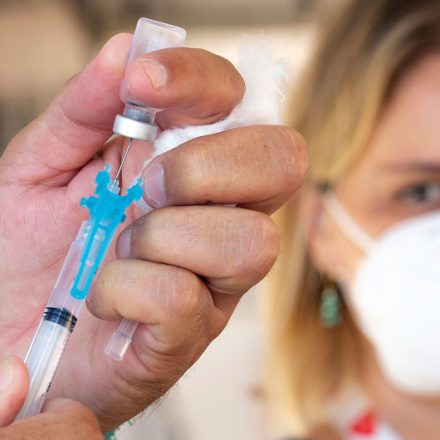
Date: January 20, 2024
Lung cancer, the most lethal form of cancer globally, often goes undetected until advanced stages, contributing to its devastating impact. In a groundbreaking development, researchers at the Massachusetts Institute of Technology (MIT) in Cambridge, Massachusetts, have devised a novel approach to early lung cancer detection using nanosensors that can be delivered through inhalation.
Published this month in Science Advances, the research introduces a revolutionary method that could transform lung cancer screening, making it as simple as taking a puff on an inhaler and following up with a urine test. Current screening rates for lung cancer remain critically low, with only about 6% of eligible individuals in the United States opting for screening, according to the American Lung Association.
Dr. Qian Zhong, co-lead author of the study and MIT researcher, likened the new detection method to a “more complex version of a pregnancy test, but it’s very simple to use.” The nanosensors, when delivered via an inhaler or nebulizer, target specific lung cancer proteins. If these proteins are present, the sensors produce a signal in the urine, detectable with a paper test strip.
The current standard screening test for lung cancer involves low-dose CT scans, but accessibility to screening facilities poses a challenge for many. Edward Tan, co-lead author and scientist at Prime Medicine, a biotech company in Cambridge, Massachusetts, emphasized the need for an alternative that doesn’t rely on resource-intensive infrastructure.
The innovative nanosensors are polymer nanoparticles coated in unique DNA barcodes, designed to be targeted by protease enzymes linked to stage I lung adenocarcinoma. Upon contact, these proteases cleave off the barcodes, which enter the bloodstream and are excreted in urine. A simple test strip can then detect these barcodes, providing results in about 20 minutes.
The researchers conducted tests on mice genetically engineered to develop human-like lung tumors. Using aerosol nebulizers, they delivered the nanosensors to mice with equivalent stage I or II cancer. Identified through a machine learning algorithm, the four most accurate sensors exhibited 100% specificity and 84.6% sensitivity.
One of the notable advantages of this inhalation-based method is its noninvasive nature, distributing evenly across the lungs and offering relatively quick detection, with the entire process taking about 2 hours in mice. This groundbreaking technology has already shown promise in diagnosing liver cancer and nonalcoholic steatohepatitis through injection and urine tests in a previous phase 1 clinical trial.
The researchers envision potential applications beyond lung cancer, with plans to explore its use in distinguishing between viral, bacterial, and fungal pneumonia. The technology could also be adapted to diagnose other lung conditions such as asthma and chronic obstructive pulmonary disease.
While the innovative approach has garnered excitement within the medical community, challenges lie ahead in adapting the technology for human use. Factors like fluid volume regulation, diet, hydration, drug interference, renal function, and the heterogeneity of human cancer cells present hurdles that researchers aim to address in further studies. As the team continues to analyze human biopsy samples, the hope is to progress to studies involving humans or nonhuman primates, bringing this groundbreaking lung cancer detection technology closer to clinical application.











